On Monday in Baku, Azerbaijan, where the world’s first oil well was drilled and where the smell of fuel could be smelled outdoors, the two-week session, dubbed COP29, came down to the main focus of hammering out a new deal on how many hundreds of billions — or even trillions — of dollars a year to flow will from rich nations to poor ones in order to try to contain and adapt to climate change.
The money is intended to help developing countries transition their energy systems from planet-warming fossil fuels to clean energy, offset climate disasters caused mostly by carbon pollution from rich countries, and adapt to future extreme weather events.
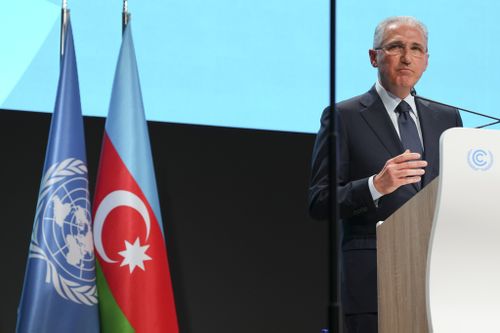
“These numbers may sound big, but they are nothing compared to the cost of inaction,” said the new COP29 president, Mukhtar Babayev, upon taking office.
He said “COP29 is the moment of truth for the Paris Agreement”, which in 2015 set a target of limiting warming to 1.5 degrees from pre-industrial times.
This year, the world is on pace for 1.5 degrees of warming and is on track to become the hottest year in human civilization, the European climate service Copernicus announced earlier this month.
But the Paris target of 1.5 refers to two or three decades, not one year of that much warming, and “it’s not possible, it’s just not possible,” to give up on the 1.5 target just yet, said World Meteorological Organization Secretary-General Celeste Saulo.
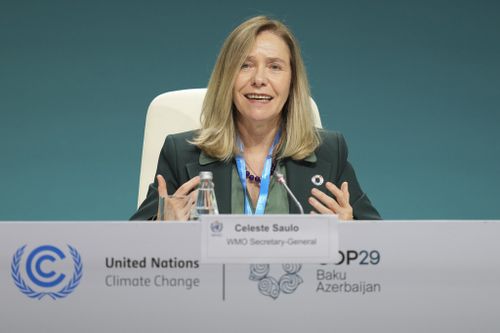
There are many signs of climate disasters
The effects of climate change in disasters such as hurricanes, droughts and floods are already present and painful, said Babajev.
“We are on the way to ruin,” he said.
“See them or not, people suffer in the shadows. They die in the dark. And they need more than sympathy. More than prayers and paperwork.
“They are crying out for leadership and action.”
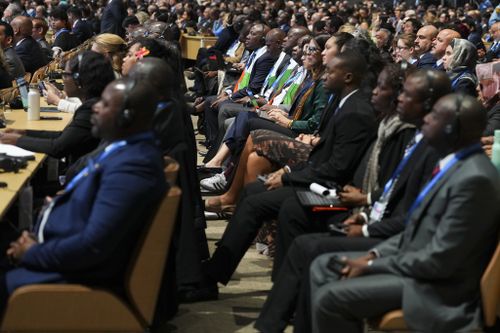
United Nations climate secretary Simon Stiell, whose home island of Carriacou was devastated by Hurricane Beryl earlier this year, used the story of his neighbour, 85-year-old Florence, to help find “a way out of this mess”.
Her home was destroyed and Florence focused on one thing: “Being strong for her family and for her community.”
“There are people like Florence in every country on Earth. Knocked down and standing up again,” Stiell said.
He said that’s what the world needs to do about climate change, especially monetizing it.
“Let’s reject any idea that climate finance is charity,” Stiell said.
“An ambitious new climate finance target is entirely in the self-interest of every nation, including the biggest and richest” because it will prevent future warming of 5 degrees, where he said the world was heading before it started fighting climate change.
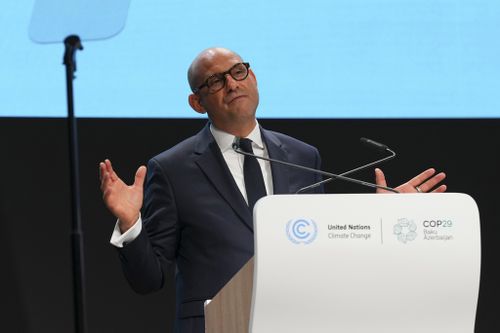
The background of war and upheaval hangs over the talks
In the past year, nation after nation has experienced political upheaval, the latest being in the United States — the largest carbon emitter in history — and Germany, a climate leader.
The election of Donald Trump, who disputes climate change and its impact, and the collapse of Germany’s ruling coalition are changing the dynamics of climate negotiations here, experts say.
“The Global North needs to cut emissions even faster and it should be cutting by 20, 30, 40 percent now. But instead we have Trump, we have a German government that just fell apart because part of it wanted to be even a little bit ambitious” , said climate scientist Friederike Otto from Imperial College London.
“So we’re a long way off.”
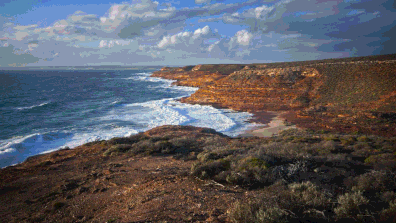
Cult tourist spots that will most likely be wiped out by climate change
Initially, Azerbaijani organizers hoped that nations around the world would stop fighting during the two weeks of negotiations. This did not happen as the wars in Ukraine, Gaza and elsewhere continued.
Dozens of climate activists at the conference – many of them wearing Palestinian keffiyehs – held banners calling for climate justice and for nations to “stop fueling genocide”.
“The same systems of oppression and discrimination put people on the front lines of climate change and put people on the front lines of the conflict in Palestine,” said Lise Masson, a protester with Friends of the Earth International.
She criticized the US, UK and EU for not spending more on climate finance, while also supplying Israel with weapons.
Mohammed Ursof, a climate activist from Gaza, called the protesters for talks to “return the power to the natives, return the power to the people”.
Jacob Johns, Hopi community organizer and Akimel O’odham, came to the conference with hope for a better world.
“Within the sights of destruction lie the seeds of creation,” he said on a panel about indigenous hopes for climate action.
“We have to understand that we are not citizens of a nation, we are the Earth.”
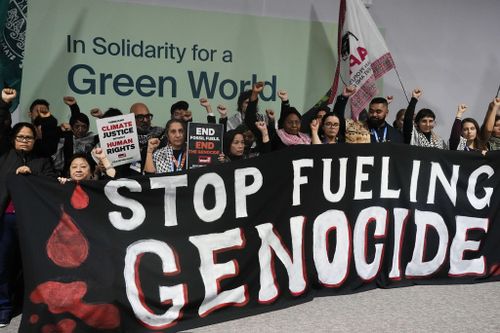
He hopes for a strong outcome
The financial package being considered at this year’s talks is important because each nation must submit new — and likely stronger — targets by early next year to cut emissions of heat-trapping gases from burning coal, oil and natural gas. It is part of the 2015 Paris Agreement, which requires countries to step up their efforts every five years.
Some Pacific climate researchers said the amount of money on offer is not the biggest problem for small island nations, which are among the most threatened by rising seas in the world.
“There may be funding, but accessing this funding is quite a barrier for us here in the Pacific,” said Hilda Sakiti-Waqa of the University of the South Pacific in Fiji.
“The Pacific really needs a lot of technical help to put these applications together.”

The long-term global average temperature is now 1.3 degrees above pre-industrial levels, just two-tenths of a degree below the agreed threshold.
To keep the world from warming more than 1.5 degrees, global carbon emissions must be cut by 42 percent by 2030, according to a new United Nations report.
“We cannot leave Baku without a significant outcome,” Stiell said.
